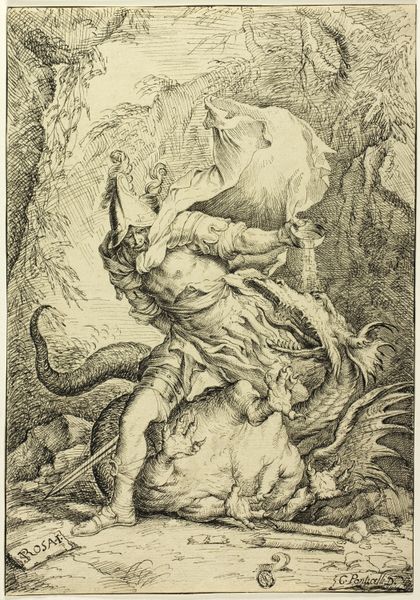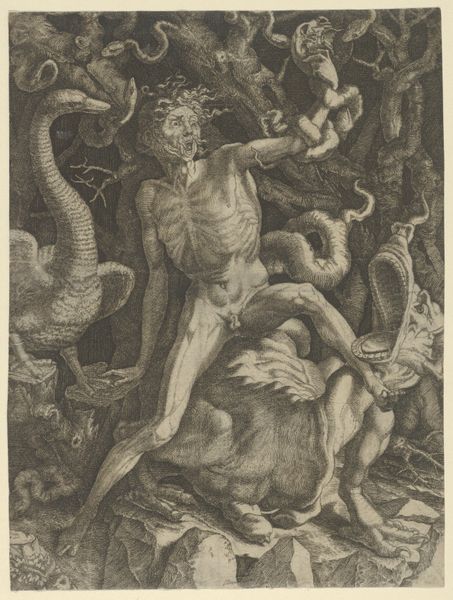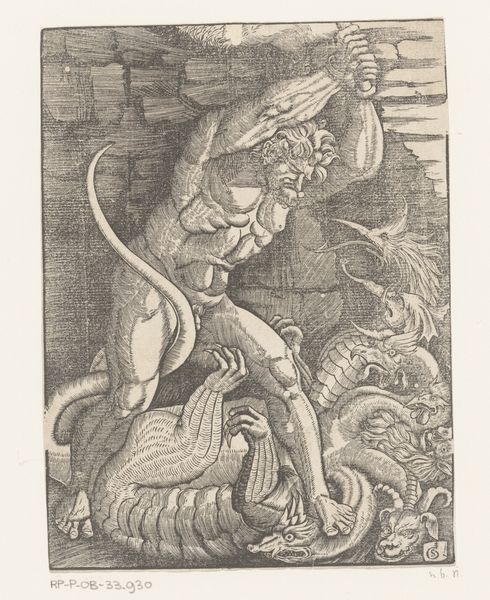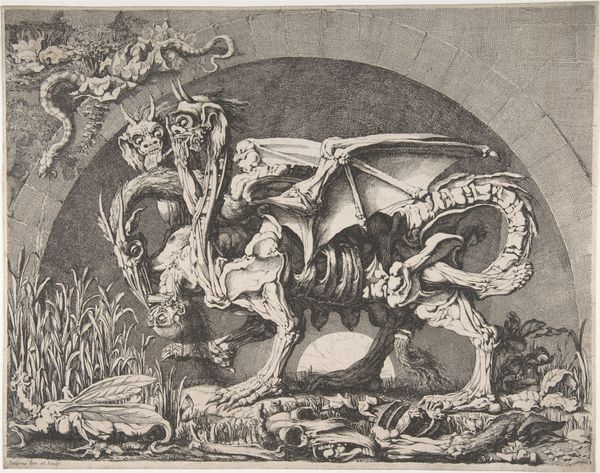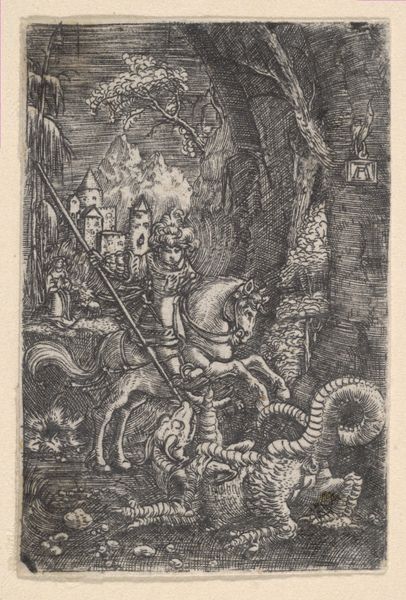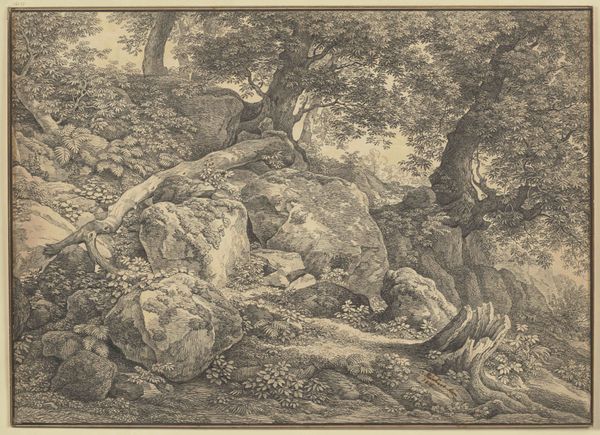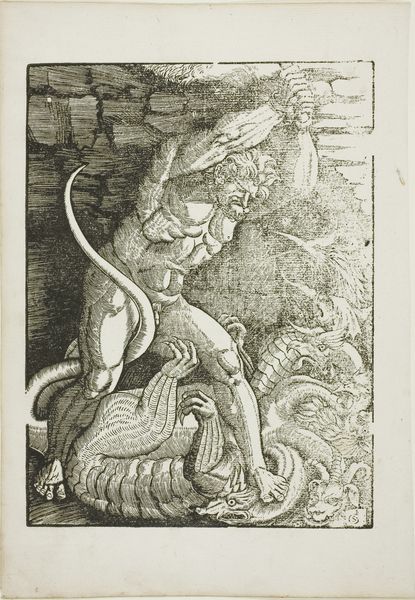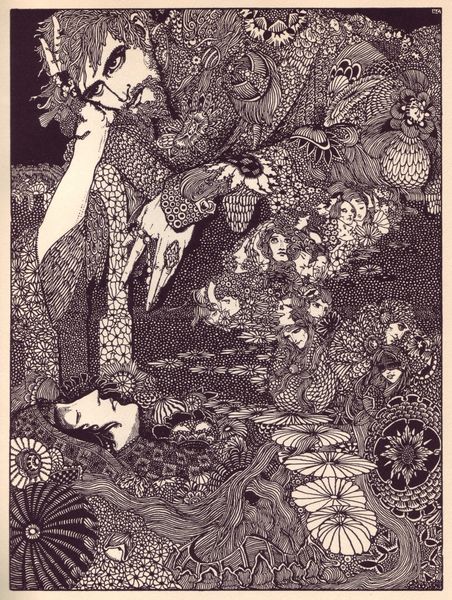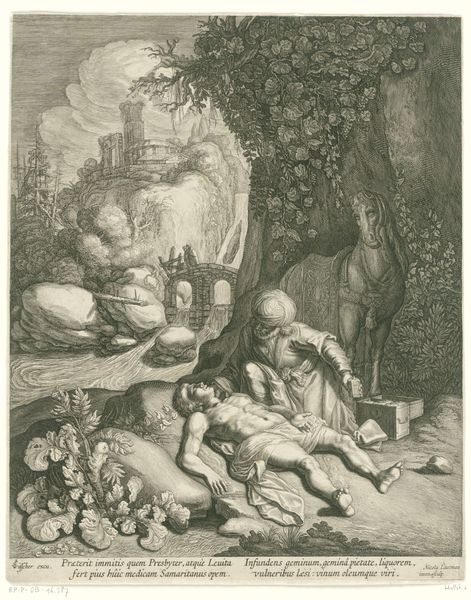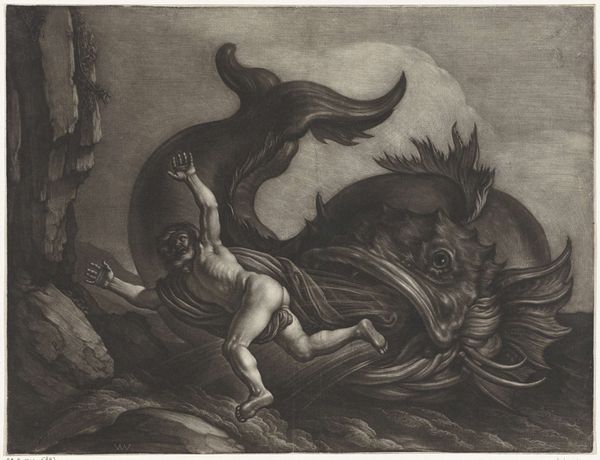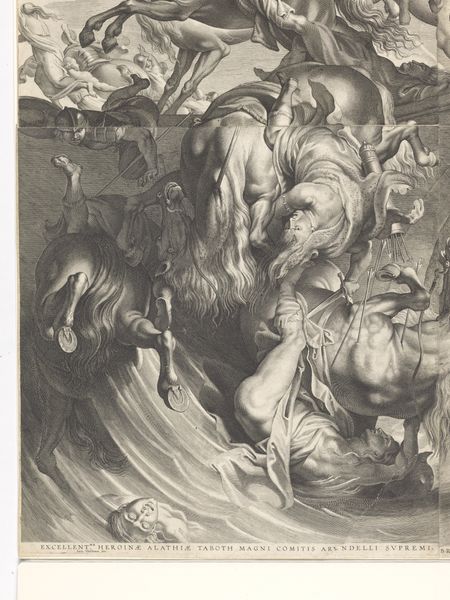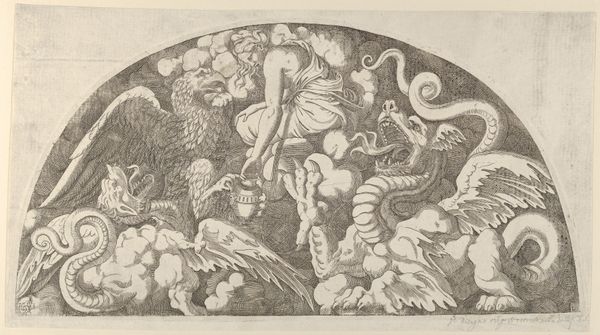
print, engraving
#
animal
# print
#
figuration
#
pencil drawing
#
romanticism
#
history-painting
#
engraving
Dimensions: sheet: 19 7/8 × 15 3/8 in. (50.5 × 39 cm) plate: 19 7/8 × 15 3/8 in. (50.5 × 39 cm)
Copyright: National Gallery of Art: CC0 1.0
Editor: Here we have Johann Heinrich Wilhelm Tischbein's "The Animal Laocöon," created in 1796. It’s an engraving and it's incredibly intense! The lions struggling against the serpent… it’s quite brutal. What's your take on this piece? Curator: The "Animal Laocöon" offers a fascinating lens through which to view late 18th-century anxieties around power, nature, and societal order. Tischbein, known for his Neoclassical style, here seems to be deliberately subverting that aesthetic, replacing human suffering with animalistic struggle. How might this substitution reflect the anxieties of his time, politically and socially? Editor: Well, replacing people with animals certainly amps up the…the raw, untamed aspect of it all, right? Makes it more primal. Was he making a statement about the French Revolution, maybe? The chaos and overturning of the natural order of things? Curator: Exactly! Consider the context: The French Revolution was shaking the foundations of European society. This work can be seen as a commentary on the disruption of hierarchies, the struggle against tyranny, and the bestial forces unleashed during periods of upheaval. Do you think the choice of animals – specifically lions and a serpent – carries symbolic weight? Editor: Oh, absolutely. Lions representing power and nobility, the serpent symbolizing deceit and chaos...it's all very loaded. But I’m curious: replacing the famous Laocöon sculpture, which depicts human suffering with an animal one… how would that impact audiences? Curator: It detaches the narrative from specific historical figures, inviting a broader reflection on the universal themes of struggle and oppression. It could be argued he’s depoliticizing the immediate context to point at longer cycles of civilization’s undoing, by forces inside or outside it. What do you think that means? Editor: It sounds like the chaos and tyranny aren't exclusive to humans or recent history – it’s everywhere, timeless, inherent? Like something to continually beware of. Curator: Precisely. Tischbein compels us to acknowledge the fragility of power, regardless of who wields it. Editor: I never thought about it like that, as a kind of allegory for power itself, so volatile. This engraving suddenly seems less about mythology and more about an ongoing, universal fight. Curator: Exactly! Art continually interacts with theory, engaging in meaningful dialogue.
Comments
No comments
Be the first to comment and join the conversation on the ultimate creative platform.
